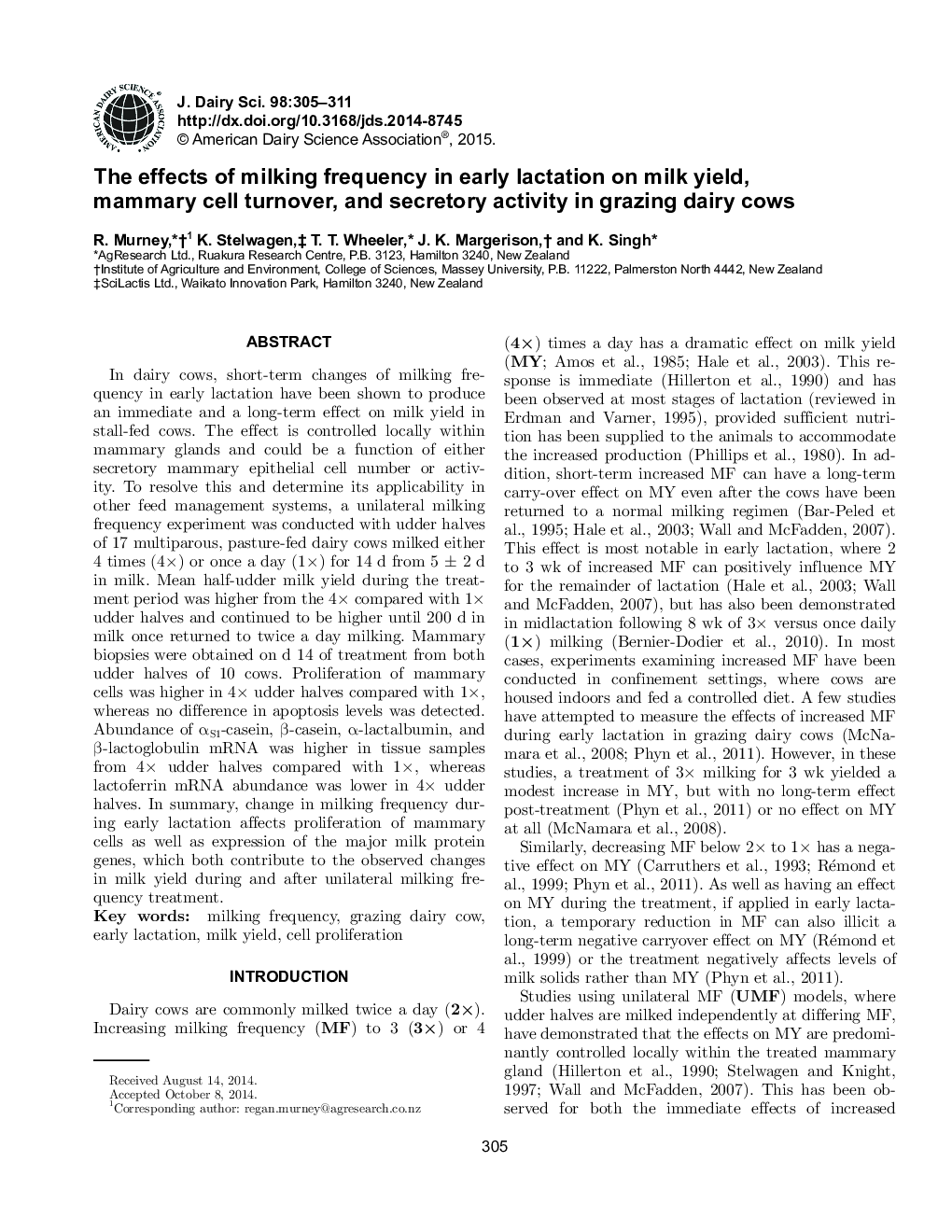| Article ID | Journal | Published Year | Pages | File Type |
|---|---|---|---|---|
| 10973804 | Journal of Dairy Science | 2015 | 7 Pages |
Abstract
In dairy cows, short-term changes of milking frequency in early lactation have been shown to produce an immediate and a long-term effect on milk yield in stall-fed cows. The effect is controlled locally within mammary glands and could be a function of either secretory mammary epithelial cell number or activity. To resolve this and determine its applicability in other feed management systems, a unilateral milking frequency experiment was conducted with udder halves of 17 multiparous, pasture-fed dairy cows milked either 4 times (4Ã) or once a day (1Ã) for 14 d from 5 ± 2 d in milk. Mean half-udder milk yield during the treatment period was higher from the 4à compared with 1à udder halves and continued to be higher until 200 d in milk once returned to twice a day milking. Mammary biopsies were obtained on d 14 of treatment from both udder halves of 10 cows. Proliferation of mammary cells was higher in 4à udder halves compared with 1Ã, whereas no difference in apoptosis levels was detected. Abundance of αS1-casein, β-casein, α-lactalbumin, and β-lactoglobulin mRNA was higher in tissue samples from 4à udder halves compared with 1Ã, whereas lactoferrin mRNA abundance was lower in 4à udder halves. In summary, change in milking frequency during early lactation affects proliferation of mammary cells as well as expression of the major milk protein genes, which both contribute to the observed changes in milk yield during and after unilateral milking frequency treatment.
Related Topics
Life Sciences
Agricultural and Biological Sciences
Animal Science and Zoology
Authors
R. Murney, K. Stelwagen, T.T. Wheeler, J.K. Margerison, K. Singh,
